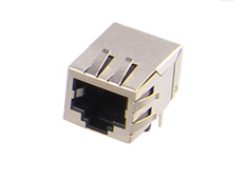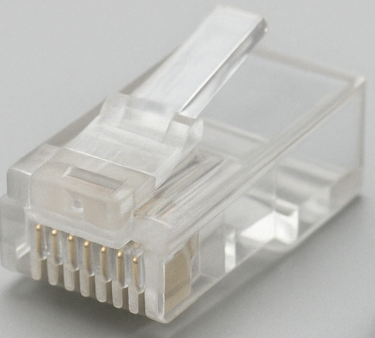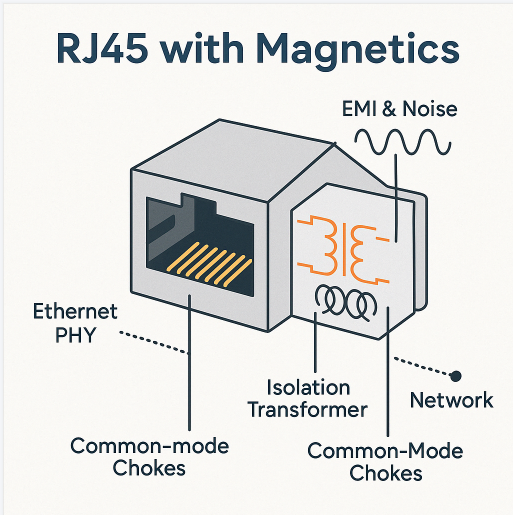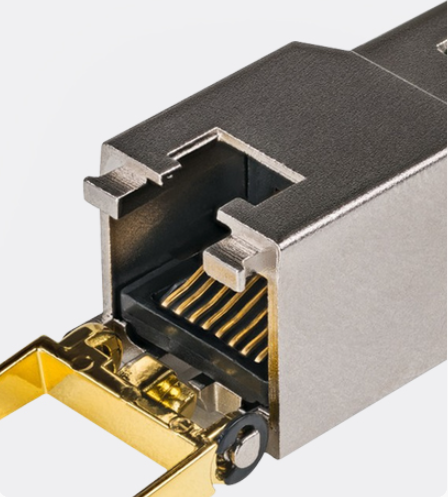Compare RJ45 with magnetics and standard RJ45 connectors, helping you understand the internal differences, key use cases, and when it makes sense to use a modular RJ45 jack with integrated magnetics. Whether you're designing for high-speed data, PoE delivery, or compact industrial systems, this breakdown will guide your next connector choice.
Learn more:
https://www.glgnet.biz/selecting-the-correct-rj45-jack-connector
1.What Is an RJ45 with Magnetics?
An RJ45 with magnetics is a specialized Ethernet connector that integrates key magnetic components—such as isolation transformers and common-mode chokes—directly into its housing. Unlike standard connectors, it not only provides a physical interface but also ensures signal conditioning and circuit protection in one compact unit.
The built-in transformer delivers galvanic isolation between the Ethernet PHY and the external network, shielding internal components from voltage spikes and ground loop faults. Meanwhile, integrated filters help suppress EMI and high-frequency noise, enhancing signal stability—particularly in industrial or high-speed networking environments.
By combining these functions, RJ45 connectors with magnetics reduce the need for external circuitry, simplify PCB design, and save board space. They are widely used in PoE systems, automation equipment, and Gigabit Ethernet applications where reliability and performance are critical.
Learn more:
https://www.glgnet.biz/what-is-an-rj45-magjack-and-why-it-matters-in-industrial-networking

2.Standard RJ45: Simpler, But Functionally Limited
A standard RJ45 is a basic Ethernet connector that provides a physical link between devices but lacks any built-in magnetic circuitry. It serves purely as a data interface, with no embedded components for signal isolation or noise suppression.
Since it doesn’t include transformers or EMI filters, any required signal conditioning must be handled by separate magnetics on the main board. This often results in more complex PCB design, increased component count, and additional layout constraints.
Standard RJ45 connectors are typically used in simple or short-range network applications—such as consumer electronics or low-speed LAN devices—where electromagnetic interference is minimal and the system already integrates external magnetic components. While standard RJ45 jacks are affordable and widely available, they do not offer the same level of protection or signal integrity as their magnetics-integrated counterparts, making them less ideal for demanding or high-speed environments.

3.Key Differences Between RJ45 with Magnetics and Standard RJ45
|
Feature |
RJ45 with Magnetics |
Standard RJ45 |
|
Magnetic Isolation |
Yes |
No |
|
Common-Mode Noise Suppression |
Built-in |
External or none |
|
PCB Layout Complexity |
Simplified |
Needs discrete magnetics |
|
Cost per Unit |
Higher |
Lower |
|
Typical Applications |
Industrial, PoE, Gigabit devices |
Basic consumer devices |
4.When to Use RJ45 with Magnetics
For Ethernet designs that demand both reliability and efficiency, integrated magnetics rj45 offer a compact, high-performance solution. By combining data connectivity with signal isolation and EMI suppression, they’re especially valuable in environments where space is limited and electrical noise is a concern. Here are four key situations where they truly shine:
4.1 High-Speed Ethernet (10/100/1000 Mbps)
At higher data rates, maintaining signal clarity is essential. The internal transformers and filters in rj45 magjacks help preserve differential signal quality over long cable runs, reducing packet loss and preventing signal distortion. This makes them ideal for fast, stable connections in gigabit networks and beyond.
4.2 Power over Ethernet (PoE) Applications
When devices transmit both power and data through a single Ethernet line, built-in magnetic isolation becomes critical. RJ45 modular jack with magnetics ensures safe voltage separation between circuits, protecting devices from surges and meeting PoE standards like IEEE 802.3af, at, and bt. Common use cases include IP cameras, access points, and smart lighting systems.
4.3 Industrial and Rugged Networking
In factories, outdoor enclosures, or other electrically noisy environments, devices must withstand harsh conditions without compromising performance. RJ45 magjacks provide integrated noise filtering and isolation, helping switches, controllers, and industrial gateways maintain consistent network performance even in high-EMI surroundings.
4.4 Compact or EMC-Sensitive Designs
For space-constrained systems such as IoT gateways, embedded modules, or DIN-rail devices, eliminating external magnetics simplifies board layout and saves valuable PCB space. The integrated design also helps meet strict EMC standards by localizing the signal conditioning directly at the network interface.
4.5 Bottom line:
If your application requires clean signals, space-saving hardware, and robust performance under tough conditions, an RJ45 with magnetics is the go-to choice. From PoE systems to gigabit networks and industrial automation, these connectors help streamline design while boosting electrical stability and overall reliability.

5.When a Standard RJ45 May Be Enough
While RJ45 with integrated magnetics are ideal for high-performance networking, standard RJ45 jacks still have their place—especially in simpler or cost-driven applications.
They’re a practical choice for low-speed or short-distance Ethernet setups, such as home devices or internal system communication, where EMI is minimal and signal quality demands are lower.
You’ll also find them in consumer electronics like printers, smart TVs, and routers, where the magnetic components are already integrated on the mainboard. This approach helps reduce overall cost and allows for more flexible PCB design.
In designs where magnetics are handled elsewhere, a standard RJ45 simplifies sourcing, lowers connector cost, and is well-suited for modular or replaceable ports.
In short, if your system runs at modest speeds and doesn’t face harsh electrical conditions, a non-magnetic RJ45 can be a reliable and economical option.

Learn more:
https://www.glgnet.biz/how-to-choose-between-sfp-and-rj45-connectors-for-your-network
https://www.glgnet.biz/top-10-rj45-jack-manufacturers
https://www.glgnet.biz/common-problems-with-cable-damage-and-how-to-fix-them
Conclusion
In summary, RJ45 connectors with magnetics offer enhanced isolation, EMI suppression, and space-saving benefits—making them ideal for gigabit networks, PoE devices, and high-performance industrial setups. On the other hand, standard RJ45 jacks remain useful for budget-conscious or low-speed applications where external magnetics are already integrated. By understanding the difference and matching the connector type to your system needs, you can optimize both cost and performance.